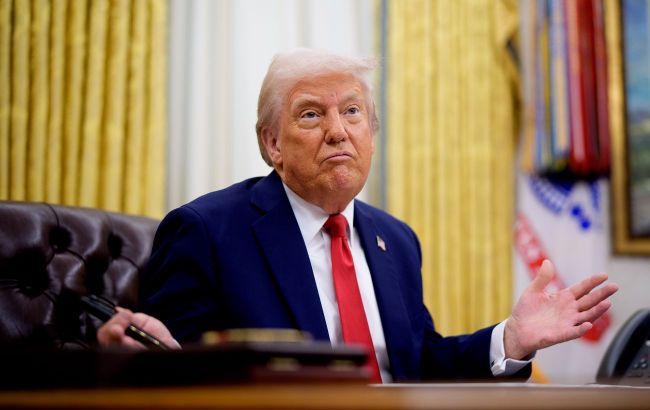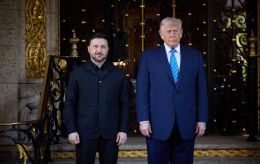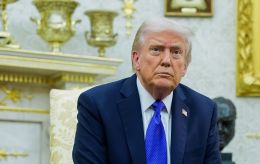Trump’s moves driving Asian countries to band together against US
 Donald Trump (photo: Getty Images)
Donald Trump (photo: Getty Images)
A number of foreign leaders who previously focused primarily on the US have visited China in recent days.
RBC-Ukraine explains how Donald Trump ruined relations with them and what this could lead to in the future.
Key points
- Why did the US spoil its relations with India, Vietnam, and Indonesia?
- What does India's rapprochement with China mean?
- How far are these countries willing to go in their relations with Beijing?
A series of international events is currently taking place in China, including the Shanghai Cooperation Organization summit and celebrations marking the 80th anniversary of the end of World War II. Indian Prime Minister Narendra Modi, Kazakh President Kassym-Jomart Tokayev, Russian President Vladimir Putin, and a dozen other Asian leaders have come to visit Chinese leader Xi Jinping.
Among them are those who have long been oriented towards China for various reasons: Iranian President Masoud Pezeshkian, Belarusian President Alexander Lukashenko, and Pakistani Prime Minister Shehbaz Sharif.
Under different circumstances, China would probably have gathered a less impressive delegation. The leaders of several countries that previously had strong relations with the US also attended the summit and are gradually moving closer to China.
India
Among others, the visit of Indian Prime Minister Narendra Modi to China is significant. This is his first visit in seven years. There were many reasons for this.
The two largest countries in Asia, India and China, have complex and multifaceted relations. On the one hand, they interact within the framework of the aforementioned SCO and BRICS. At the same time, there are enough contradictions between India and China. Both countries perceive each other as strategic competitors vying for dominance in East Asia.
At the same time, India has historically had ties with Western countries and is developing military and political cooperation with them. The most well-known, but not the only, example of this is the QUAD format (the US, India, Japan, and Australia). This is perceived as a challenge by China and is one of the reasons why Beijing has allied with Pakistan, India's main antagonist.
In 2020, an armed conflict broke out between the countries in the mountainous region of Ladakh. It resulted in the deaths of 20 Indian soldiers and an unknown number of Chinese troops. Although the situation was eventually resolved, it seriously undermined political trust between New Delhi and Beijing. Since then, India has introduced a series of economic measures against China, including investment restrictions, a ban on Chinese apps such as TikTok, and a reduction in trade ties.
According to Reuters, Modi's current visit is another sign of diplomatic warming between New Delhi and Beijing amid tensions in India's relations with the US. Upon his return to the White House, the US President imposed the highest tariffs on imports from India among Asian countries and threatened additional sanctions over the country's purchase of Russian oil.
Last October, Indian Prime Minister Narendra Modi and Chinese leader Xi Jinping held talks on the sidelines of the BRICS summit in Russia, which marked the beginning of a thaw in relations between the two countries. They are now gradually reducing tensions. However, it is unclear how far this will go. There are objective factors that make a strong Indian-Chinese alliance impossible. First and foremost, there is a lack of trust and competition in a number of areas.
Vietnam
Despite still being ruled by a communist regime (which consolidated its power after the withdrawal of American troops), Vietnam has been trying to balance between China and the US in recent years. During Trump's first term, Vietnam became one of the biggest beneficiaries of the US trade war with China. The country attracted investments from American companies Apple and Intel. At the same time, part of the production capacity was transferred from China to Vietnam.
In 2023, the US and Vietnam upgraded their relations to a Comprehensive Strategic Partnership. This partnership provides for cooperation on defense, technology, and countering China's influence in the South China Sea. However, during Trump's second term, relations between the two countries cooled.
In April this year, the US imposed 46% trade tariffs on Vietnamese exports. In July, a trade agreement was signed that partially softened the tariffs to 20%, but overall, Trump's policy continues to pose risks for Vietnam. China is trying to take advantage of this. In April, Chinese leader Xi Jinping visited Vietnam. During the visit, they discussed increasing trade volumes and Chinese investment in infrastructure. The visit of Vietnamese Prime Minister Pham Minh Chinh to China aims to continue this line.
Indonesia
Like Vietnam, Indonesia has long been oriented towards the US. In the 2010s, the US invested in Indonesia's energy and technology sectors and supported the country in its territorial disputes with China in the South China Sea. In 2023, relations between the two countries were also formalized as a Comprehensive Strategic Partnership, similar to Vietnam.
However, Indonesia, like most other countries in the world, did not escape US trade tariffs. In this country's case, they reached 32% and subsequently fell to 19%. Indonesia is a key supplier of palm oil, clothing, and electronic components to the US market, so the introduction of tariffs led to a stock market crash and a 5-10% decline in exports in the first quarter of this year. Indonesia is currently looking for ways to reorient its trade to other markets. This is one of the goals of Indonesian President Prabowo Subianto's visit to China.
In any case, a sharp shift toward China should not be expected. After all, Beijing's ambitions are viewed with caution in South and Southeast Asia. But as the United States under Trump continues to pressure its partners, countries in the region will seek ways to protect themselves in one way or another.
Sources: Reuters, The Hindu, VietnamPlus, Nusantara Bisnis Konsultan Indonesia, and the South China Morning Post.

